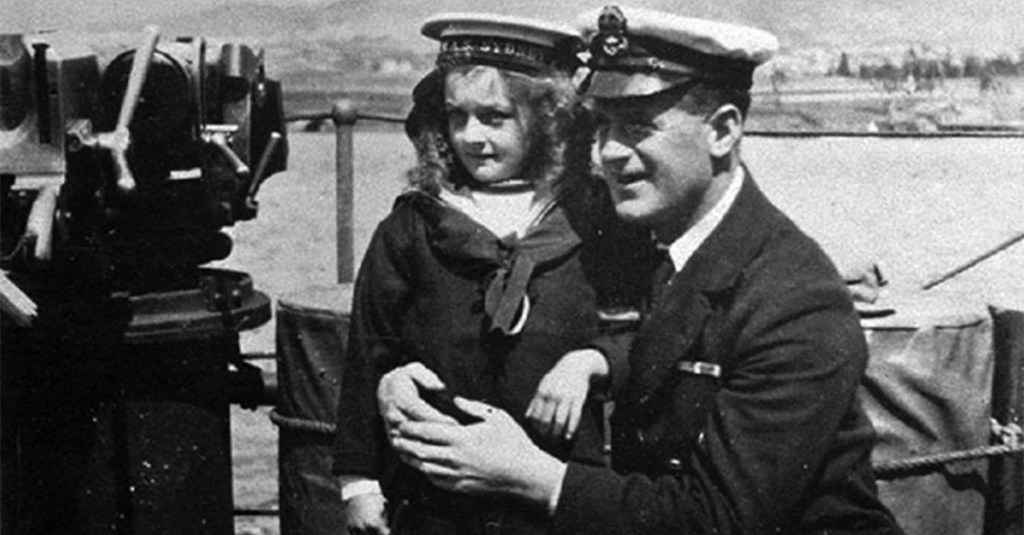Nancy Bentley, in a custom uniform, stands with an officer on the HMAS Sydney in 1920.
In November 1920, a little girl was playing in the bushland of Tasmania when she slipped and fell to the ground. Nancy Bentley surprised a snake which proceeded to bite her wrist, threatening her life. Because of the remote location where she was bitten and the fact that she was a woman, the Royal Australian Navy enlisted her into the service as a mascot to save her life.
Yup. Really.

The light cruiser HMAS Sydney which once had a living human girl as its mascot.
(Public domain)
The problem was this: The closest doctor was in the town of Sorrell, and it was unlikely that Nancy’s father could get her there in time. So dad desperately rowed out to the HMAS Sydney, a light cruiser conducting exercises on the coast.
The ship’s medics were willing to assist the injured girl, but regulations from the crown and instructions from admirals ordered the commander, Captain Henry Cayley, to prevent women from boarding the ship. He felt he needed to create some official pretext to explain the little girl on his ship. But women, even little girls, were forbidden from serving in the standard ranks of the navy.
So Cayley turned to the office of mascot, an official rank in many military forces at the time that was typically assigned to animals adopted by the unit or crew. Basically, a crew could acquire or purchase an animal and then use the “wages” assigned to the mascot to feed and house it. Understandably, the rules regarding this rank were lax since, you know, it was typically for dogs and cats.
So Cayley ordered that Nancy be admitted onto the crew with service number 000001 and given a rating of “mascot” on November 15. Her terms of enlistment were even more lax. She was to remain in the navy “till fed up.”
The ship’s medical staff gave her rudimentary treatment and sent her to Hobart, Tasmania, for further treatment. She was also allowed to see a movie at the town’s theater after her treatment before the ship carried her back home. In all, she spent eight days in the navy.
“I was the crew’s official mascot and everybody from the Captain down gave me VIP treatment,” Nancy said in 1970.
She was well-reviewed by the navy. Her character was reviewed as “very good,” and she was “exceptional” in her naval duties.
It would take another 21 years before women were allowed into the actual ranks of the Royal Australian Navy as World War II required manpower that only women could provide.
Nancy’s story is now available as a children’s book, and her image adorns a trophy given to the oldest commissioned ship in the Royal Australian Navy.


























